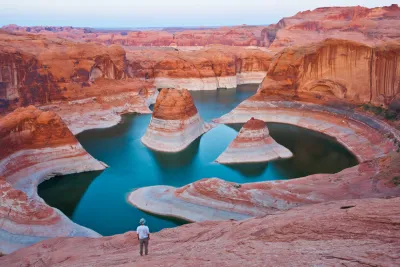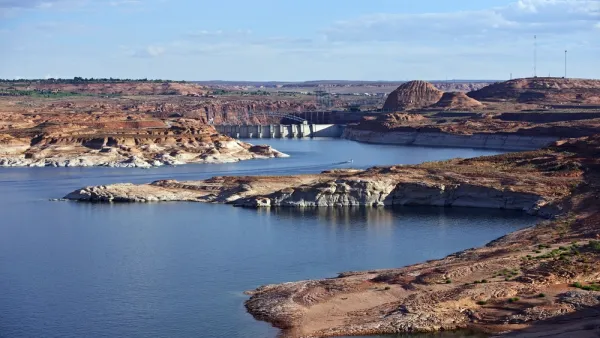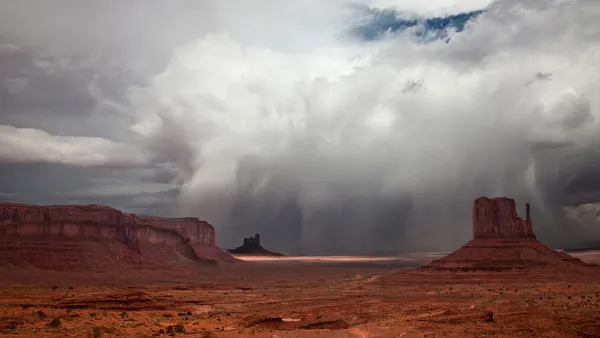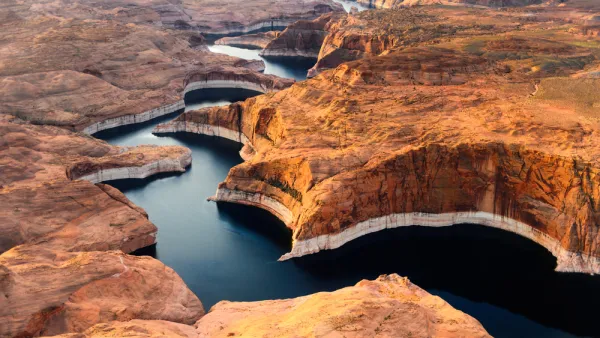In an interview with Lincoln Institute of Land Policy, former Arizona Governor and former Secretary of the Interior Bruce Babbit recommends new approaches to the challenges facing the Colorado River watershed.

Dr. Jim Holway, director of the Babbitt Center for Land and Water Policy, interviews former Arizona Governor and former Secretary of the Interior Bruce Babbit on the subject of the Colorado River.
Here are a few highlights from the interview:
- "The first challenge is to recognize that we live in a desert with huge and rapid climatic fluctuations. Across the twentieth century, we built the great system of reservoirs to store water against these fluctuations. But our assumptions regarding climate change and population growth were way off. We are now drawing more than a million acre-feet out of reservoir storage each year in excess of average inflow. And obviously that cannot continue. We must now work toward establishing balance across the entire basin. To get to that equilibrium will require adjustments from every water user: agricultural, municipal, power generation, and environmental uses. And it obviously can’t be done on a piecemeal, ad hoc basis; we’ll have to invent new processes of public involvement and shared adjustments from every town and city and farm in the basin."
- "In the West, connecting and integrating land and water use is a relatively new idea. Water use, like land use and zoning, has traditionally been a local affair, with little coordination or direction at the state or interstate level. But water is a common resource; developing on a local, project by project basis without thinking about regional supply and demand constraints inevitably leads to the crises and environmental degradation that we are now experiencing. The question is how to change that."
FULL STORY: Colorado River Reflections

National Parks Layoffs Will Cause Communities to Lose Billions
Thousands of essential park workers were laid off this week, just before the busy spring break season.

Retro-silient?: America’s First “Eco-burb,” The Woodlands Turns 50
A master-planned community north of Houston offers lessons on green infrastructure and resilient design, but falls short of its founder’s lofty affordability and walkability goals.

Delivering for America Plan Will Downgrade Mail Service in at Least 49.5 Percent of Zip Codes
Republican and Democrat lawmakers criticize the plan for its disproportionate negative impact on rural communities.

Test News Post 1
This is a summary

Test News Headline 46
Test for the image on the front page.

Balancing Bombs and Butterflies: How the National Guard Protects a Rare Species
The National Guard at Fort Indiantown Gap uses GIS technology and land management strategies to balance military training with conservation efforts, ensuring the survival of the rare eastern regal fritillary butterfly.
Urban Design for Planners 1: Software Tools
This six-course series explores essential urban design concepts using open source software and equips planners with the tools they need to participate fully in the urban design process.
Planning for Universal Design
Learn the tools for implementing Universal Design in planning regulations.
EMC Planning Group, Inc.
Planetizen
Planetizen
Mpact (formerly Rail~Volution)
Great Falls Development Authority, Inc.
HUDs Office of Policy Development and Research
NYU Wagner Graduate School of Public Service





























